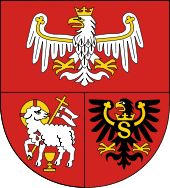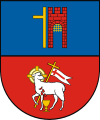Olsztyn
| Olsztyn | |||
|---|---|---|---|
 Left to right: Castle • Market Square • House at Okopowa Street • Old Town Hall | |||
| |||
|
Motto: Olsztyn – Miasto Młode Duchem… (Olsztyn – a city young in spirit…) | |||
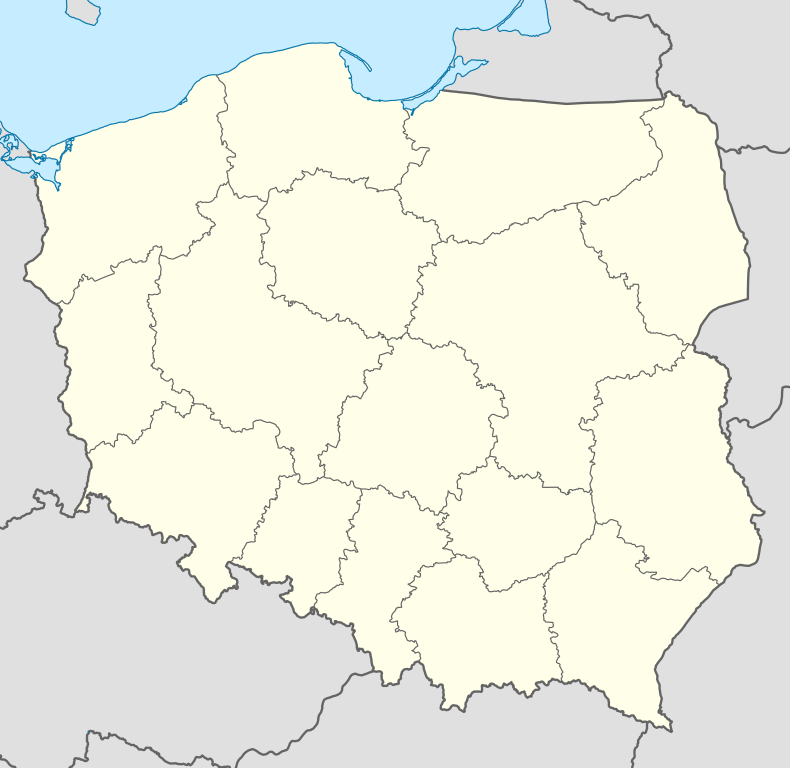 Olsztyn | |||
| Coordinates: 53°47′N 20°30′E / 53.783°N 20.500°E | |||
| Country |
| ||
| Voivodeship | Warmian-Masurian | ||
| County | city county | ||
| Established | 14th century | ||
| Town rights | 1353 | ||
| Government | |||
| • Mayor | Piotr Grzymowicz | ||
| Area | |||
| • City | 88.328 km2 (34.104 sq mi) | ||
| Highest elevation | 154 m (505 ft) | ||
| Lowest elevation | 88 m (289 ft) | ||
| Population (2011) | |||
| • City | 175,420 | ||
| • Density | 2,000/km2 (5,100/sq mi) | ||
| • Metro | 270,000 | ||
| Time zone | CET (UTC+1) | ||
| • Summer (DST) | CEST (UTC+2) | ||
| Postal code | 10-001 to 11–041 | ||
| Area code(s) | +48 89 | ||
| Car plates | NO | ||
| Website | http://www.olsztyn.eu | ||
Olsztyn [ˈɔlʂtɨn] (German: Allenstein (![]() listen); Old Polish: Holstin; Old Prussian: Alnāsteini or Alnestabs; Lithuanian: Olštynas) is a city on the Łyna River in northeastern Poland. Olsztyn is the capital of the Warmian-Masurian Voivodeship, and is a city with powiat rights.
listen); Old Polish: Holstin; Old Prussian: Alnāsteini or Alnestabs; Lithuanian: Olštynas) is a city on the Łyna River in northeastern Poland. Olsztyn is the capital of the Warmian-Masurian Voivodeship, and is a city with powiat rights.
History
![]() Teutonic Order 1353–1466
Teutonic Order 1353–1466
![]() Kingdom of Poland 1466–1569
Kingdom of Poland 1466–1569
![]() Polish–Lithuanian Commonwealth 1569–1772
Polish–Lithuanian Commonwealth 1569–1772
![]() Kingdom of Prussia 1772–1871
Kingdom of Prussia 1772–1871
![]() German Empire 1871–1918
German Empire 1871–1918
![]() Weimar Germany 1918–1933
Weimar Germany 1918–1933
![]() Nazi Germany 1933–1945
Nazi Germany 1933–1945
![]() People's Republic of Poland 1945–1989
People's Republic of Poland 1945–1989
![]() Republic of Poland 1989–present
Republic of Poland 1989–present
In 1346, on Warmian land, the forest was cleared at a location on the Alle (Alna river), now Łyna River, for a new settlement in Prussian Warmia. The following year, Teutonic Knights began the construction of an Ordensburg-type castle as a stronghold against the Old Prussians, and the settlement of Allenstein was first mentioned the following year. The German-language name Allenstein meant a castle on the Alle River, and the settlement became known in Polish-language transliteration as Olsztyn. The settlement received municipal rights from Johannes von Leysen on 31 October 1353, and the castle was completed in 1397. Allenstein was captured by the Kingdom of Poland during the Polish-Lithuanian-Teutonic War in 1410, and again in 1414 during the Hunger War, but it was returned to the monastic state of the Teutonic Knights after hostilities ended.
Allenstein joined the Prussian Confederation in 1440. It rebelled against the Teutonic Knights in 1454 upon the outbreak of the Thirteen Years' War and requested protection from the Polish Crown. Although the Teutonic Knights captured the town the following year, it was retaken by Polish troops in 1463. The Second Peace of Thorn in 1466 designated Allenstein and the Bishopric of Warmia as part of Royal Prussia under the sovereignty of the Crown of Poland.
From 1516 to 1521, Nicolaus Copernicus lived at the castle as administrator of both Allenstein and Mehlsack (now Pieniężno). Copernicus was in charge of the defenses of Allenstein and Warmia during the Polish-Teutonic War of 1519–21.
Allenstein was sacked by Swedish troops in both 1655 and 1708 during the Polish-Swedish wars, and the town's population was nearly wiped out in 1710 by epidemics of bubonic plague and cholera.
The town was annexed by the Kingdom of Prussia in 1772 during the First Partition of Poland. A Prussian census recorded a population of 1,770 people, predominantly farmers, and Allenstein was administered within the Province of East Prussia. It was visited by Napoleon Bonaparte in 1807 after his victories over the Prussian Army at Jena and Auerstedt. By 1825, the town was inhabited by 1266 Poles and 1341 Germans[1] The German-language newspaper, Allensteiner Zeitung, was first published in 1841. The town hospital was founded in 1867.
_-_16.04.1917.jpg)
Allenstein became part of the German Empire in 1871 during the Prussian-led unification of Germany. Two years later, the city was connected by railway to Thorn (Toruń). Its first Polish language newspaper, the Gazeta Olsztyńska, was founded in 1886. Allenstein's infrastructure developed rapidly: gas was installed in 1890, telephones in 1892, public water supply in 1898, and electricity in 1907. In 1905, the city became the capital of Regierungsbezirk Allenstein, a government administrative region in East Prussia. From 1818 to 1910, the city was administered within the East Prussia Allenstein District, after which it became an independent city.
Shortly after the outbreak of World War I, troops of the Russian Empire captured Allenstein in 1914, but it was recovered by the Imperial German Army in the Battle of Tannenberg. The battle actually took place much closer to Allenstein than to Tannenberg (now Stębark), but the victorious Germans, having been defeated in the medieval battle of Tannenberg, named it as such for propaganda purposes.

After the defeat of Germany in World War I, the East Prussian plebiscite was held in 1920 to determine whether the populace of the region, including Allenstein, wished to remain in East Prussia or become part of Poland. In order to advertise the plebiscite, special postage stamps were produced by overprinting German stamps and sold commencing 3 April of that year. One kind of overprint read PLÉBISCITE / OLSZTYN / ALLENSTEIN, while the other read TRAITÉ / DE / VERSAILLES / ART. 94 et 95 inside an oval whose border gave the full name of the plebiscite commission. Each overprint was applied to 14 denominations ranging from 5 Pf to 3 M. The plebiscite was held on 11 July, and produced 362,209 votes (97.8%) for East Prussia and 7,980 votes (2.2%) for Poland. The stamps became invalid on 20 August. Despite their short period of use, almost all of the stamps are cheaply available both used and unused.
The football club SV Hindenburg Allenstein played in Allenstein from 1921 to 1945. After the Nazi seizure of power in 1933, Poles and Jews in Allenstein were increasingly persecuted. In 1935, the Wehrmacht made the city the seat of the Allenstein Militärische Bereich. It was the home of the 11th Infanterie Division, the 11th Artillery Regiment, and the 217th Infanterie Division.
On 12 October 1939, after the German invasion of Poland that began World War II, the Wehrmacht established an Area Headquarters for Wehrkreis I that controlled the sub-areas of Allenstein, Lötzen (now Giżycko) and Ciechanów. Beginning in 1939, members of the Polish-speaking minority, especially members of the Union of Poles in Germany, were deported to German death camps.
Allenstein was plundered and burnt by the invading Soviet Red Army on 22 January 1945, as the Eastern Front reached the city. Allenstein's German population evacuated the region or were subsequently expelled. On 2 August 1945, the city became part of Poland according to the Potsdam Agreement, and officially renamed to the Polish Olsztyn. In October 1945, the German population of Olsztyn was expelled by Order of the City Commanders of Olsztyn.
A tyre factory was founded in Olsztyn in 1967. Its subsequent names include OZOS, Stomil, and Michelin.
Olsztyn has been the capital of the Warmian-Masurian Voivodeship since 1999. It was previously in the Olsztyn Voivodeship.
Geography
Olsztyn is located in the north-east part of Poland in the region known as the "Thousand Lakes".
Greenbelt
More than half of the forests occupying 21.2% of the city area form a single complex of the Municipal Forest (1050 ha) used mainly for recreation and tourism purposes. Within the Municipal Forest area are situated two peat-land flora sanctuaries, Mszar and Redykajny. Municipal greenery (560 ha, 6.5% of the town area) developed in the form of numerous parks, green spots and three cemeteries over a century-old. The greenery includes 910 monuments of nature and groups of protected trees in the form of beech, oak, maple and lime-lined avenues.
Lakes


The city is situated in a lake region of forests and plains. There are 15 lakes inside the administrative bounds of the city (13 with areas greater than 1 ha). The overall area of lakes in Olsztyn is about 725 ha, which constitutes 8.25% of the total city area.
| Lake | Area (ha) | Maximum depth (m) |
|---|---|---|
| Lake Ukiel (a.k.a. Jezioro Krzywe) | 412 | 43 |
| Lake Kortowskie | 89.7 | 17.2 |
| Lake Track (a.k.a. Jezioro Trackie) | 52.8 | 4.6 |
| Lake Skanda | 51.5 | 12 |
| Lake Redykajny | 29.9 | 20.6 |
| Lake Długie | 26.8 | 17.2 |
| Lake Sukiel | 20.8 | 25 |
| Lake Tyrsko (a.k.a. Jezioro Gutkowskie) | 18.6 | 30.6 |
| Lake Stary Dwór (a.k.a. Jezioro Starodworskie ) | 6.0 | 23.3 |
| Lake Siginek (a.k.a. Jezioro Kopytko, Jezioro Podkówka, Jezioro Styginek) | 6.0 | insufficient data |
| Lake Czarne | approximately 1.3 | insufficient data |
| Lake Żbik | approximately 1.2 | insufficient data |
| Lake Pereszkowo (a.k.a. Jezioro Pyszkowo) | approximately 1.2 | insufficient data |
| Lake Mummel (a.k.a. Jezioro Mumel) | approximately 0.3 | insufficient data |
| Lake Modrzewiowe | 0.25 | insufficient data |
Demographics

| Year | Population |
|---|---|
| 1772 | 1,770 |
| 1846 | 4,000 |
| 1875 | 6,000 |
| 1885 | 11,555 |
| 1890 | 19,373 |
| 1895 | 25,000 |
| 1939 | 50,000 |
| 1941 | 54,300 |
| 1946 | 23,000 |
| 1950 | 45,000 |
| 1972 | over 100,000 |
| 1994 | 165,000 |
| 2000 | 170,000 |
| 2009 (30 June) | 176,387 |
Administrative division

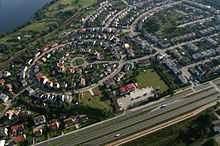

Olsztyn is divided into 23 districts:
| District | Population | Area | Density |
|---|---|---|---|
| Brzeziny | 1,456 | 2.25 km2 (0.87 sq mi) | 647.1/km² |
| Dajtki | 5,863 | 7.5 km2 (2.9 sq mi) | 781.7/km² |
| Generałów | 6,500 | no data | no data |
| Grunwaldzkie | 6,027 | 1.46 km2 (0.56 sq mi) | 4,128.1/km² |
| Gutkowo | 2,256 | 7.2 km2 (2.8 sq mi) | 313.3/km² |
| Jaroty | 29,046 | 4.82 km2 (1.86 sq mi) | 6,026.1/km² |
| Kętrzyńskiego | 7,621 | 4.83 km2 (1.86 sq mi) | 1,577.8/km² |
| Kormoran | 16,166 | 1.1 km2 (0.4 sq mi) | 14,696.4/km² |
| Kortowo | 1,131 | 4.22 km2 (1.63 sq mi) | 268/km² |
| Kościuszki | 6,704 | 1.18 km2 (0.46 sq mi) | 5,681.4/km² |
| Likusy | 2,286 | 2.1 km2 (0.8 sq mi) | 1,088.6/km² |
| Mazurskie | 4,615 | 5.98 km2 (2.31 sq mi) | 771.7/km² |
| Nad Jeziorem Długim | 2,408 | 4.23 km2 (2 sq mi) | 569.3/km² |
| Nagórki | 12,538 | 1.69 km2 (0.65 sq mi) | 7,418.9/km² |
| Pieczewo | 10,918 | 2.24 km2 (0.86 sq mi) | 4,874.1/km² |
| Podgrodzie | 11,080 | 1.35 km2 (0.52 sq mi) | 8,207.4/km² |
| Podleśna | 10,414 | 9.93 km2 (3.83 sq mi) | 1,048.7/km² |
| Pojezierze | 13,001 | 2.39 km2 (0.92 sq mi) | 5,439.7/km² |
| Redykajny | 1,555 | 6.1 km2 (2.36 sq mi) | 254.9/km² |
| Śródmieście | 3,448 | 0.58 km2 (0.22 sq mi) | 5,944.8/km² |
| Wojska Polskiego | 6,759 | 5.03 km2 (2 sq mi) | 1,343.7/km² |
| Zatorze | 6,988 | 0.45 km2 (0.17 sq mi) | 15,528.9/km² |
| Zielona Górka | 1,015 | 6.44 km2 (2.49 sq mi) | 157.6/km² |
There are many smaller districts: Jakubowo, Karolin, Kolonia Jaroty, Kortowo II, Łupstych, Niedźwiedź, Piękna Góra, Podlesie, Pozorty, Skarbówka Poszmanówka, Słoneczny Stok, Stare Kieźliny, Stare Miasto, Stare Zalbki, Stary Dwór, Track. These do not have council representative assemblies.
Culture
Theatres
- Stefan Jaracz Theatre (est. 1925) the host of International Theatre Festival DEMOLUDY
- Puppet Theatre
Cinemas
- Helios
- Multikino
Museums
Olsztyn's largest museum is the Museum of Warmia and Mazury. The city also has the Gazeta Olsztyńska House, Museum of Nature, and Museum of Sports.
Architecture


- The Old Town
- The Gothic castle of the Bishopric of Warmia built during the 14th century.
- St. James's Cathedral (Polish: św. Jakuba, German: St. Jacob or St. Jakob).
- Old Town Hall on the Market Square – built in mid-14th century.
- Gazeta Olsztyńska House at Fish Market.
- The town walls and the Upper Gate (since the mid-19th century known as the High Gate).
- Neogothic church of the Holy Heart of Jesus, built during the years 1901–1902
- The New City Hall
- The Railway Bridge over the River Łyna gorge near Artyleryjska and Wyzwolenia streets, built during the years 1872–1873
- The Jerusalem Chapel, built in 1565
- Church of St. Lawrence, built during the late 14th century
- FM- and TV-mast Olsztyn-Pieczewo – 360 metres high, since the collapse of the Warsaw radio mast the tallest structure in Poland

The history of the castle in Olsztyn:
The castle was built between 1346–1353 and by then it had one wing on the north-east side of the rectangular courtyard. Access to the castle lead from the drawbridge over the river Łyna (Alle), surrounded by a belt of defensive walls and a moat. The south-west wing of the castle was built in the 15th century, the tower situated in the west corner of the courtyard, from the middle of 14th century, was rebuilt in the early 16th century and had a round shape on a square base and was 40 meters high. At the same time the castle walls were raised to a height of 12 meters and a second belt of the lower walls was built. The castle walls were partly combined with city walls, which made the castle look like it had been a powerful bastion defending access to the city. The castle was owned by Warmia Chapter, which until 1454, together with the Prince-Bishop of Warmia, was under military protection of the Teutonic Knights and their Monastic State of Prussia.
The castle had played a huge role in the Polish-Teutonic wars by then. After the Battle of Grunwald in 1410, the Poles took it after a few days siege. In the Thirteen Years' War (1454–66) it was jumping from rule to rule. The Knights threatened the castle and the town in 1521, but the defence was very effective. They contained one failed assault. There is a connection between the history of the castle, the city of Olsztyn, and Nicolaus Copernicus. He prepared the defense of Olsztyn against the invasion of the Teutonic Knights.
In the sixteenth century, there were two prince-bishops of Warmia that stayed there: Johannes Dantiscus – "the first sarmatian poet, endowed with the imperial laurel wreath for "Latin Songs" (1538, 1541) and Marcin Kromer, who wrote with equal ease in Latin and Polish scientific and literary works (1580). Kromer consecrated the chapel of St. Anna, which was built in the south-west wing of the castle. In the course of time both wings of the castle lost military importance, which for residential purposes has become very convenient. In 1779 Prince-Bishop Ignacy Krasicki stopped here as well.
After the Royal Prussian annexation of Warmia in 1772, the castle became the property of the state board of estates (War and Domain Chamber, Kriegs- und Domänenkammer). In 1845 the bridge over the moat was replaced by a dam better connecting the castle with the city. In 1901–1911 a general renovation of the castle was performed, however several sections of the building were violated at the same time where they changed the original look of the castle e.g. putting on window frames in a cloister. The tower was crowned in 1921 and again in 1926 in the halls of the castle, became a museum.
In 1945 the whole castle became home to the Masurian Museum, which today is called the Museum of Warmia and Masuria. In addition there are also popular events held within the frameworks of the Olsztyn Artistic Summer and so called “evenings of the castle” and “Sundays in the Museum”.
Music
Death metal act Vader, regarded as one of the first Death metal bands from Poland.
Economy

The Michelin tyre company (former Stomil Olsztyn) is the largest employer in the region of Warmia and Masuria.[2] Other important industries are food processing and furniture manufacturing.
Transport
There is a bus network with 33 bus lines, including 6 suburban lines and 2 night-time lines. An 11 kilometres (7 miles) tram network is planned; 15 Tramino cars were ordered from Solaris in September 2012. The network is expected to be completed in 2015.[3] Olsztyn has train connections to Warsaw, Gdańsk, Szczecin, Poznań, Bydgoszcz, Iława, Działdowo and Ełk.
Unemployment
Olsztyn- 4,000 (people) – 4.8% rate
Education

- University of Warmia and Mazury
- University of Computer Science and Economics
- Olsztyńska Szkoła Wyższa im. Józefa Rusieckiego
- Olsztyńska Wyższa Szkoła Informatyki i Zarządzania im. Tadeusza Kotarbińskiego
- Wyższe Seminarium Duchowne HOSIANUM
- Masurian Institute (est. 1943)
Sports

- Indykpol AZS Olsztyn – men's volleyball team playing in the Polish Volleyball League (PLS, Polska Liga Siatkówki)
- OKS Stomil Olsztyn – men's football team, (8 seasons in the Polish Ekstraklasa as Stomil Olsztyn)
- Warmia Traveland Olsztyn – men's handball team playing in the Seria A (Polish First League)
- AZS UWM Trójeczka Olsztyn – men's basketball team playing in the Polish Second League
- WMPD Olsztyn – men's rugby team, playing in the First Polish League
- Budowlani Olsztyn - a wrestling team
Politics
Members of the Sejm elected from Olsztyn constituency in 2005
- Mieczysław Aszkiełowicz, Self-Defense of the Republic of Poland (Samoobrona Rzeczypospolitej Polskiej)
- Beata Bublewicz, Civic Platform (PO, Platforma Obywatelska)
- Jerzy Gosiewski, Law and Justice (PiS, Prawo i Sprawiedliwość)
- Tadeusz Iwiński, Democratic Left Alliance (SLD, Sojusz Lewicy Demokratycznej)
- Edward Ośko, League of Polish Families (LPR, Liga Polskich Rodzin)
- Adam Puza, Law and Justice (PiS, Prawo i Sprawiedliwość)
- Sławomir Rybicki, Civic Platform (PO, Platforma Obywatelska)
- Lidia Staroń, Civic Platform (PO, Platforma Obywatelska)
- Aleksander Marek Szczygło, Law and Justice (PiS, Prawo i Sprawiedliwość)
- Zbigniew Włodkowski, Polish Peasant Party (PSL, Polskie Stronnictwo Ludowe)
Members of Senate elected from Olsztyn constituency in 2005
- Ryszard Józef Górecki, Civic Platform (PO, Platforma Obywatelska)
- Jerzy Szmit, Law and Justice (PiS, Prawo i Sprawiedliwość)
Jewish community
Though Jews did trade in the city fairs during medieval times, they were not allowed to trade freely in the villages surrounding the city.[4] In 1718, Bishop Teodor Andrzej Potocki imposed a ban on Jewish trade.[5] Other bishops after him continued the ban, which apparently wasn't successful since the city population complained about Jews dealing with animal leather and other products in 1742. Permanent Jews were found in the city in 1780, and they were allowed to settle outside the city walls.[6] In 1814, the Simonson brothers opened the first Jewish store in town. In 1850, the city official authority announced that any citizen that hosted a wondering Jew in his house, would be fined and imprisoned.[7]

The Jewish community of the city as a congregation was established in 1820. Shortly after, a prayer room was established on Richterstrasse. In 1877, the congregation bought a plot of land on Liebstädterstrasse and built a synagogue there.[8] A Jewish cemetery was built on Seestrasse (present-day Grundwalzka). While at its peak, the town's Jewish population was 448 Jews in 1933.
On Kristallnacht, the town synagogue was destroyed and later used as a bomb shelter.[9] Now, a sports' club sits on the site of the synagogue.[10]
By 1939, 135 Jews were left in the city, after most others fled from the country. Those who lived in town in 1940 were deported to Nazi concentration camps.[11] In June 1946, 16 Holocaust survivors settled in the city and in 1948, the congregation had 190 worshipers. Most of them emigrated to Israel throughout the next few decades. There is no current trace of the Jewish cemetery.[12]
The city was the birthplace of world famous Jewish architect Erich Mendelsohn. In town, Mendelsohn planned the mourners' chapel (called the Mendelsohn house) next to the cemetery.[13] The building is currently restored.[14] In addition, it was the birthplace of German Socialist and SPD leader Hugo Haase. Frieda Strohmberg, an Impressionist, lived and worked in the city from 1910 to 1927. Documentation of the Jewish owned shops in town exists.[15]
Notable residents

- Nicolaus Copernicus (1473–1543), astronomer, administrator, and town commander
- Olga Desmond (1890–1964), German dancer and actress
- Johannes von Leysen (1310–1388), town founder
- Johannes Knolleisen (+1511), German academic and provider of academic stipends
- Lucas David (1503–1583), German historian of Prussia
- Karl Roensch (1858–1921), industrialist, city governmental official
- Hugo Haase (1863–1919), Jewish-German politician, jurist and pacifist
- Franz Justus Rarkowski (1873–1950), military bishop (1938–45)
- August Trunz (1875–1963), founder of the Prussica-Sammlung Trunz
- Hubert Hönnekes (1880–1947), teacher at Kopernikus-Schule, member of East Prussian Landtag (provincial assembly), member of the German Reichstag (national parliament) 1930–1933
- Erich Mendelsohn (1887–1953), German-Jewish architect who fled the Nazis
- Olga Desmond (1891–1964), dancer and actress
- Kurd von Bülow (1899–1971), geologist
- Klaus-Joachim Zülch (1910–1988), neuro scientist
- Günter Wand (1912–2002), conductor
- Georg Hermanowski (1918–1993), author, translator
- Hans-Jürgen Wischnewski (1922–2005), politician
- Curt Lowens (*1925), German actor
- Leonhard Pohl (*1929), gymnast
- Maximilian Kaller from 1930–1947 Bishop of Ermland
- Wolfgang Milde (*1934), library director, handwriting specialist
- Wolf Lepenies (*1941), sociologist, political scientist and author
- Georg Schimanski, camera man
- Kurt Baluses soccer player and trainer of VFB Stuttgart
- Ulrich Schrade (1943–2009), German-Polish philosopher and pedagogue
- Mamed Khalidov (*1980-), Best Middleweight MMA fighter in Poland
- Aslambek Saidov(*1984-), Best Welterweight MMA fighter in Poland
- Marian Bublewicz (1950–1993), Polish rally and racing driver of the 80s and 90s
- Juliusz Machulski (*1955), director
- Izabela Trojanowska (*1955), actress and singer
- Krzysztof Hołowczyc (*1962), rally driver
- Artur Wojdat (*1968), swimmer
- Józef Glemp (*1929), from 1979–1981 Bishop of Warmia, seat at Olsztyn
- Wojciech Grzyb (*1981), volleyball player
- Tomasz Zahorski soccer player
- Piotr "Peter" Wiwczarek (*1965), guitarist and vocalist, frontman for the death metal band Vader.
- Adrian Mierzejewski (* 1986), footballer
- Małgorzata Jasińska (*1984), retired professional cyclist, twice National Road Race Champion
- Andrzej Friszke (*1956-), historian on the Polish Communist Party
- Julia Marcell (*1982-), singer/songwriter and pianist
- Eugeniusz Geno Malkowski (1942–), artist and painter, professor of University of Warmia and Mazury in Olsztyn
- Joanna Jędrzejczyk (1987-), mixed martial artist, current UFC Women's Strawweight Champion
International relations

Twin towns – Sister cities
Olsztyn is twinned with:
|
|
|
Olsztyn belongs to the Federation of Copernicus Cities, an association of cities where Copernicus lived and worked, such as Bologna, Frombork, Kraków, and Toruń. The main office of the federation is situated at Olsztyn Planetarium and Astronomical Observatory, located on St. Andrew's Hill (143 m) in a former water tower erected in 1897.
Notes
- ↑ Historia Pomorza:(1815-1850),Gerard Labuda, Poznańskie Towarzystwo Przyjaciół Nauk,page 157, 1993
- ↑ "100-milionowa opona w olsztyńskiej fabryce Michelin – Autoflesz.pl – Niezależny Portal Motoryzacyjny". Autoflesz.pl. Retrieved 16 September 2011.
- ↑ "Trams ordered as Olsztyn starts construction - Railway Gazette". Railway Gazette International. Retrieved 30 September 2012.
- ↑ W. Knercer, Cmentarze i zabytki kultury żydowskiej w województwie olsztyńskim, „Borussia”, no. 6, 1993, p. 53; vide K. Forstreuter, Die ersten Juden in Ostpreussen, „Altpreussische Forschungen”, ch. 14, 1937, pp. 42-48.
- ↑ http://www.sztetl.org.pl/en/article/olsztyn-607/5,history/#footnote_0
- ↑ J. Jasiński, Olsztyn w latach 1772 - 1918, in: Olsztyn “1353 - 2003, ed. S. Achremczyk, W. Ogrodziński, Olsztyn 2003, p. 228.
- ↑ J. Jasiński, Olsztyn w latach 1772 - 1918, in: Olsztyn 1353 - 2003, ed. S. Achremczyk, W. Ogrodziński, Olsztyn 2003, p. 229.
- ↑ http://www.sztetl.org.pl/en/article/olsztyn-607/11,synagogues-prayer-houses-and-others/322,old-synagogue/
- ↑ http://germansynagogues.com/index.php/synagogues-and-communities?pid=71&sid=92:allenstein
- ↑ http://www.sztetl.org.pl/en/cms/activity/863,jewish-culture-in-olsztyn/
- ↑ http://www.bundesarchiv.de/gedenkbuch/directory.html#frmResults (matches for “Allenstein”, with marked: “Wohnort” and “Geburtsort”; (as of 25 March 2009); http://www.yadvashem.org/wps/portal/!ut/p/_s.7_0_A/7_0_2KE?next_form=advanced_search (people living in Olsztyn before the war – matches for “Allenstein”, with marked: “Before the War”, (as of 25 March 2009); http://www.yadvashem.org/wps/portal/!ut/p/_s.7_0_A/7_0_2KE?next_form=advanced_search (people born in Olsztyn – matches for “Allenstein”, with marked: “Birth”; (as of 25 March 2009).
- ↑ http://www.sztetl.org.pl/en/article/olsztyn-607/12,cemeteries/1944,cemetery/
- ↑ http://www.sztetl.org.pl/en/article/olsztyn-607/39,heritage-sites/26740,dom-rodzinny-ericha-mendelsohna/
- ↑ http://www.sztetl.org.pl/en/cms/news/850,mendelsohn-s-house-will-be-renovated/
- ↑ http://www.sztetl.org.pl/en/article/olsztyn-607/5,history/#footnote_17
- ↑ "Le service municipal des jumelages" [Châteauroux municipal twinning service]. Ville de Châteauroux (in French). Archived from the original on 2012-09-20. Retrieved 2013-08-04.
- ↑ "List of Twin Towns in the Ruhr District" (PDF). 2009 Twins2010.com. Retrieved 28 October 2009.
- ↑ "Bielsko-Biała – Partner Cities". 2008 Urzędu Miejskiego w Bielsku-Białej. Retrieved 10 December 2008.
References
- (Polish) http://www.olsztyn.eu/
- (Polish) http://www.bezrobocie.net/stat_powiaty.php/
External links
| Wikimedia Commons has media related to Olsztyn. |
- Official website (English)
- Olsztyn City Guide (English)
- Activities in Olsztyn (English)
- News Olsztyn (Polish)
- Jewish history of Olsztyn (English)
| ||||||||||||||||||||
| ||||||||||||
| |||||||||||||||||

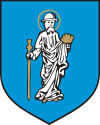
.jpg)
